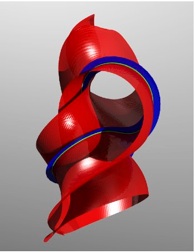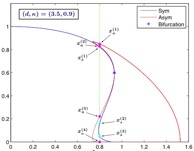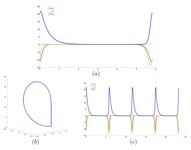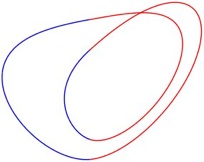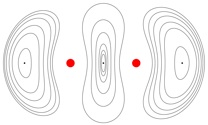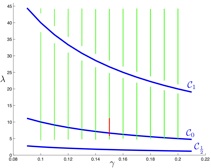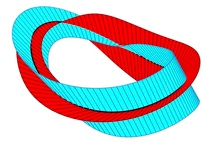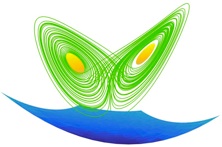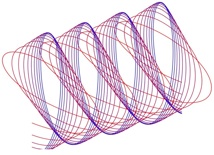[1] R. Castelli and J.-P. Lessard. Rigorous numerics in Floquet theory: computing stable and unstable bundles of periodic orbits. SIAM Journal on Applied Dynamical Systems, 12(1): 204–245, 2013. (pdf)
[2] R. Castelli, J.-P. Lessard and J.D. Mireles James. Parameterization of invariant manifolds for periodic orbits (I): efficient numerics via the Floquet normal form, SIAM Journal on Applied Dynamical Systems, 14(1): 132-167, 2015. (pdf)
[3] R. Castelli, J.-P. Lessard and J.D. Mireles James. Parameterization of invariant manifolds for periodic orbits (II): a-posteriori analysis and computer assisted error bounds, Journal of Dynamics and Differential Equations, 2017. (pdf)
[4] M. Breden, J.-P. Lessard and J.D. Mireles James. Computation of maximal local (un)stable manifold patches by the parameterization method. Indagationes Mathematicae, 27(1): 340-367, 2016. (pdf)
[5] J.-P. Lessard, J.D. Mireles James and C. Reinhardt. Computer assisted proof of transverse saddle-to-saddle connecting orbits for first order vector fields. Journal of Dynamics and Differential Equations, 26(2): 267-313, 2014. (pdf)
[6] J.-P. Lessard and C. Reinhardt. Rigorous numerics for nonlinear differential equations using Chebyshev series. SIAM Journal on Numerical Analysis, 52(1): 1-22, 2014. (pdf)
[7] A. Correc and J.-P. Lessard. Coexistence of nontrivial solutions of the one-dimensional Ginzburg-Landau equation: a computer-assisted proof, European Journal of Applied Mathematics, 26(1): 33-60, 2015. (pdf)
[8] A. Hungria, J.-P. Lessard and J.D. Mireles James. Rigorous numerics for analytic solutions of differential equations: the radii polynomial approach, Mathematics of Computation, 85 (299): 1427–1459, 2016. (pdf)
[9] L. d’Ambrosio, J.-P. Lessard and A. Pugliese. Blow-up profile for solutions of a fourth order nonlinear equation, Nonlinear Analysis: Theory, Methods and Applications, 121: 280-335, 2015. (pdf)
[10] J.-P. Lessard, J.D. Mireles James and J. Ransford. Automatic differentiation for Fourier series and the radii polynomial approach, Physica D, 334: 174-186, 2016. (pdf)
[11] M. Breden, L. Desvillettes and J.-P. Lessard. Rigorous numerics for nonlinear operators with tridiagonal dominant linear parts, Discrete and Continuous Dynamical Systems: Series A, 35(10): 4765-4789, 2015. (pdf)
[12] M. Gameiro, J.-P. Lessard and Y. Ricaud. Rigorous numerics for piecewise-smooth systems: a functional analytic approach based on Chebyshev series. Journal of Computational and Applied Mathematics, 292: 654-673, 2016. (pdf)
[13] M. Breden and J.-P. Lessard. Polynomial interpolation and a priori bootstrap for computer-assisted proofs in nonlinear ODEs, To appear in Discrete and Continuous Dynamical Systems - Series B. (pdf)
[14] J.-P. Lessard. Rigorous verification of saddle-node bifurcations in ODEs. Indagationes Mathematicae, 27(4): 1013-1026, 2016. (pdf)

